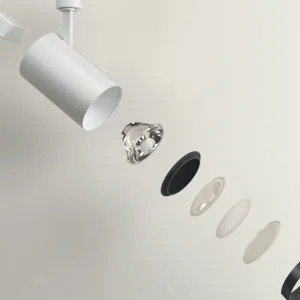The new William Eckhardt Research Center is designed to host a broad spectrum of 21st-century science, from investigation of the deepest cosmic mysteries to manipulations of matter on the scale of atoms and molecules.
The Eckhardt Center will house significant portions of the Physical Sciences Division and the University’s new Institute for Molecular Engineering. The scheme has been designed by architectural firm HOK in association with James Carpenter Design Associates (JCDA). Jamie Carpenter is a renowned artist, sculptor, and architect known for his innovative work with light and glass.
The $215 million project will provide 265,000 square feet of space on seven floors, including two below ground. The design of the new centre will be conceived as the one in which everything will fit together in an understandable, logical, and beautiful way.
The two basement levels will contain specially designed, vibration-dampening space for clean rooms and molecular imaging. The clean rooms will filter out the vast majority of airborne contaminants such as dust, microbes, aerosols, and vapours that would interfere with experiments.
One of the challenges faced by the architects, while designing the research building was to make the space feel light and connected to nature, in a situation wherein most of it is below grade. The design will influence how light plays on the building’s facades and also will draw light deep inside to illuminate laboratories and hallways.
Perforated metal fins connected to serrated glass facades on the east and west will capture and reflect light horizontally into the building throughout the day. Further, a louvered glass ceiling over the north lobby will serve as a light well, capturing and driving light vertically into the building.
An atrium will span the upper three floors of the building, forming an axis that will allow light to cross from east to west. The atrium also spatially interconnects the top three floors and various units of the Physical Sciences Division that will reside there.
Emphasis on environmental sustainability is another distinct design element of the building. This building will consume less energy than a typical laboratory building of this size. Both chilled beams and heat recovery systems will save an estimated $240,000 annually in energy costs. The University will also apply for Leadership in Energy and Design (LEED)-Gold certification from the U.S. Green Building Council (USGBC) for the Eckhardt Center.
A café will occupy part of the ground floor. Dispersed throughout the floor plan are areas for formal and informal interactions, a feature especially important for fostering collaboration among the experimentalists and theoreticians in the physical sciences.
The Eckhardt Center ultimately will accommodate 24 faculty members of the Institute for Molecular Engineering along with their affiliated research programs, including graduate students, College students, and research and support staff. The centre will also provide space for more than 220 faculty members, staff, and graduate students in the Department of Astronomy & Astrophysics, the Kavli Institute for Cosmological Physics, the theoretical physics group of the Enrico Fermi Institute, and part of the James Franck Institute.
The building is named for Chicago futures trader and alumnus William Eckhardt, in recognition of his $20 million gift in support of advanced science at the university.
Work is expected to begin in September 2011 with a scheduled completion in February 2015.





